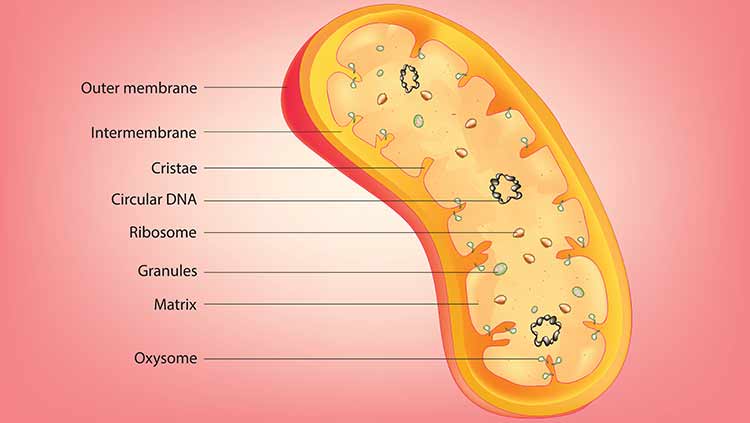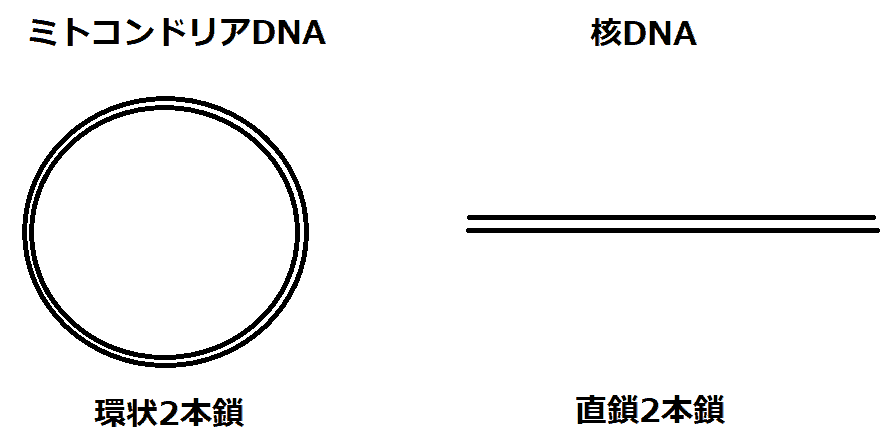Do you know about DNA inherited exclusively from the mother? Mitochondrial DNA

Do you think all DNA is inherited from both parents? In fact, there is mitochondrial DNA that is inherited only from the mother.
This article explains the differences between mitochondrial DNA and nuclear DNA.
Table of Contents
- Knowledge of DNA Helps Your Choices
- Differences between Mitochondrial DNA and Nuclear DNA
Knowledge of DNA Helps Your Choices
Are you interested in genetic therapy or genetic testing but lack knowledge about DNA?
For people like you, knowledge of DNA can be beneficial.
This is because understanding DNA helps you decide which tests or treatments are appropriate.
This article explains the differences between mitochondrial DNA and nuclear DNA.
Without knowledge of DNA, you cannot make informed decisions about treatments and tests.
As a result, you may undergo unnecessary treatments or tests, wasting your valuable time and money.
However, with DNA knowledge, you can make your own choices about tests and treatments.
This may help you obtain information such as:
- The best diet method for you
- Guidance on your unborn baby’s future
- Preventive measures to avoid illnesses
- The most effective treatment if you are ill
This article will help you make informed decisions by explaining the differences between mitochondrial DNA and nuclear DNA.
Differences between Mitochondrial DNA and Nuclear DNA
1. Location, Shape, and Size Differences
・Mitochondrial DNA is inside the mitochondria, Nuclear DNA is inside the nucleus
The nucleus and mitochondria are within the cell.
Cells are found in:
- Hair
- Organs
- Body fluids and blood
- Bones
- Skin
- Sperm
- Eggs
These components make up the human body.
In other words, DNA is within cells, and cells contain both mitochondrial DNA and nuclear DNA.

・Shape and length of Mitochondrial DNA and Nuclear DNA
The shapes of DNA also differ.
Mitochondrial DNA is circular and double-stranded, whereas nuclear DNA is linear and double-stranded.

The lengths also differ:
- Mitochondrial DNA: about 16,000 base pairs
- Nuclear DNA: 3 billion base pairs
・Base pairs: the unit indicating DNA length
Bases are components of DNA, consisting of:
- Adenine (A)
- Cytosine (C)
- Thymine (T)
- Guanine (G)
DNA is made up of these four bases arranged randomly and connected.
Furthermore, bases pair up to form a double helix structure.
Since bases are paired, they are called base pairs.
For example, a DNA sequence with (C)(G)(A)(C)(T) has five bases.
Each base pairs with a specific complementary base:
- Adenine (A) pairs with Thymine (T)
- Guanine (G) pairs with Cytosine (C)
Thus, (G)(C)(T)(G)(A) pairs with the original sequence to form a double helix structure.
This double helix DNA can be circular or linear.

・Reason for the presence of two types of DNA in a cell
The endosymbiotic theory suggests that mitochondria originated from a symbiotic relationship within cells.
Mitochondria convert harmful oxygen into usable energy for cells.
Without mitochondria, cells would struggle to obtain energy from oxygen.
The presence of mitochondria allows for efficient energy metabolism.
2. Differences in Inheritance
While nuclear DNA is inherited equally from both parents, mitochondrial DNA is believed to be inherited only from the mother.
This is because mitochondrial DNA from the father’s sperm is eliminated after fertilization.
The exact reason for this elimination in humans is unknown.
In nematodes, paternal mitochondrial DNA is also eliminated through autophagy.
Autophagy: A cellular process that degrades and recycles unnecessary components. This process is present in humans, with significant research by Yoshinori Ohsumi, who won the 2016 Nobel Prize in Physiology or Medicine.
Fertilization: When a sperm enters an egg, fertilization occurs. Both sperm and eggs are cells that contain nuclear and mitochondrial DNA.
3. Differences in Transcription and Translation Locations
Mitochondrial DNA undergoes transcription and translation within the mitochondria.
Nuclear DNA undergoes transcription in the nucleus and translation in the cytoplasm.
・What are Transcription and Translation?
Transcription and translation are processes by which DNA produces proteins.
DNA is often compared to a dictionary containing blueprints for proteins.
Transcription is like copying the necessary pages from the dictionary.
Proteins are produced only when needed.
Translation refers to using the copied blueprints (transcribed DNA) to produce proteins.
4. Differences in DNA Utilization Frequency
The utilization frequency of DNA refers to the percentage of DNA containing blueprints for proteins.
Mitochondrial DNA has a utilization frequency of about 93%, while nuclear DNA has about 5%.
For example, if a nuclear DNA dictionary has 1000 pages, only 50 pages contain blueprints for proteins.
・Non-coding regions (Intergenic regions)
DNA is divided into gene regions (coding regions) and intergenic regions.
Gene regions contain blueprints for proteins.
Intergenic regions include areas where the blueprints have been altered or lost due to mutations.
Additionally, intergenic regions regulate gene regions.
For example, if proteins are produced and supplied to the body, intergenic regions prevent further production when the body no longer needs them.
5. Differences in Copy Number
Nuclear DNA exists in two copies, while mitochondrial DNA exists in 100 to 2000 copies.
The high copy number of mitochondrial DNA is due to the continuous division and proliferation of mitochondria within cells.
6. Differences in Mutation Rates
Mitochondrial DNA has a mutation rate 5 to 10 times higher than that of nuclear DNA.
Comparing the DNA differences between humans and chimpanzees:
- Nuclear DNA differs by about 1%
- Mitochondrial DNA differs by about 9%
Despite having a common ancestor, mitochondrial DNA shows more differences due to higher mutation rates.
This indicates that mitochondrial DNA undergoes more mutations compared to nuclear DNA.
・Mitochondrial DNA is more prone to mutations due to its own reactive oxygen species
Mitochondrial DNA is more susceptible to mutations from reactive oxygen species (ROS).
Mitochondria produce ROS as by-products while generating energy from oxygen.
While ROS have roles in immune function and infection defense, excessive ROS can lead to aging and cancer.
ROS can damage DNA, causing base substitutions and leading to mutations.
・Base substitution as a cause of mutations
Base substitution is a phenomenon where one or more bases in DNA are replaced by others.
For example, a sequence (A)(C)(C)(G)(G)(G) may become (T)(C)(C)(G)(G)(G) after a base substitution.
This can alter the protein blueprint, potentially causing adverse effects.
Mutations in mitochondrial DNA can lead to mitochondrial diseases affecting muscles and the brain.
They are also linked to diabetes onset and cancer severity.
・Mutations have allowed for evolution
Mutations, although potentially harmful, also have positive effects.
Beneficial mutations contribute to evolution and species survival.
For example, humans and chimpanzees diverged from a common ancestor due to beneficial mutations adapting to environmental changes.
7. Differences in Utilization
Nuclear DNA is used for:
- Prenatal diagnosis
- Parentage testing
- PCR testing
- Forensic science
- Gene therapy
Mitochondrial DNA is also utilized in aging research.
Mutations in mitochondrial DNA can impair mitochondrial function, leading to aging.
Mitochondrial dysfunction reduces energy production, resulting in:
- Decreased physical activity
- Reduced organ function
- Lower enzyme production
These are characteristics of aging.
